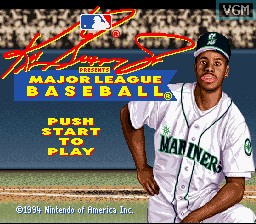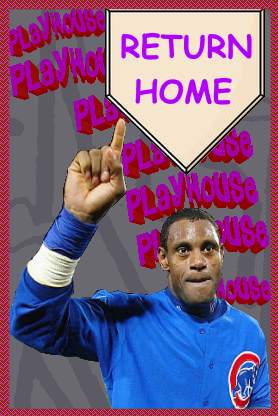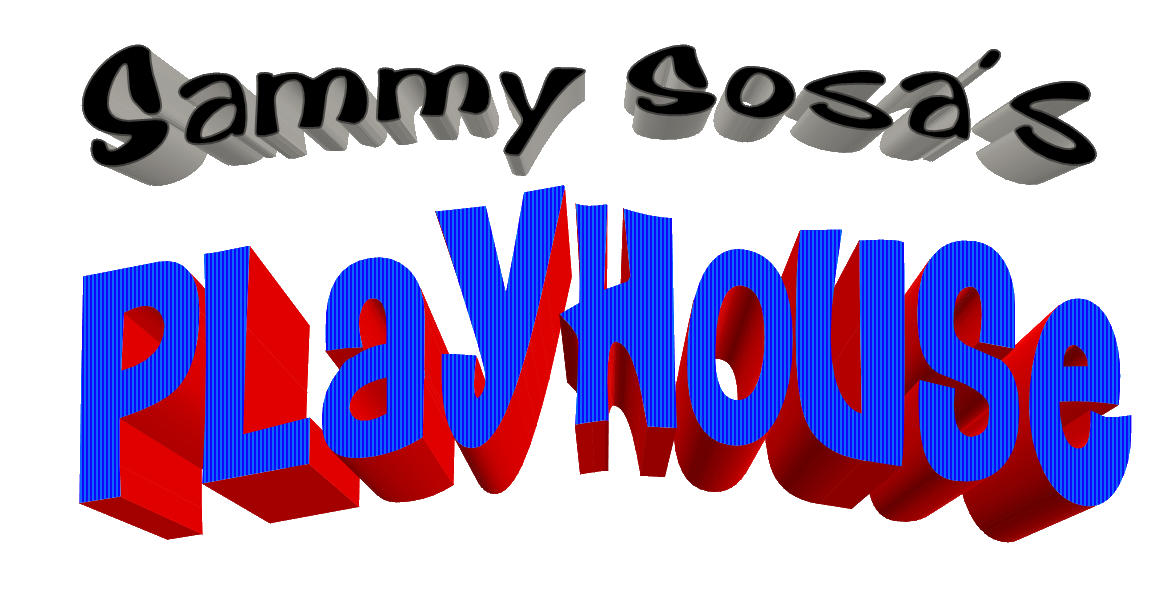
Catch Ball at Four: Ken Griffey Jr. Presents Major League Baseball
Background + Instruction Manual
Written by Detroit Beisbol Cat Stevens - March 31, 2020
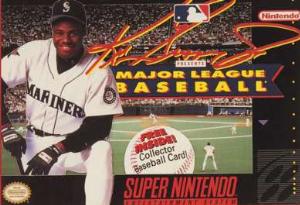
Ken Griffey Jr. Presents Major League Baseball was
released for the Super Nintendo Entertainment System in March of 1994. The game
was developed by Software Creations and published by Nintendo. Everybody knows
Nintendo, but their relation to this particular game is significant because the
Japanese gaming giant purchased the Seattle Mariners in 1992. While Nintendo of
America's then-president Howard Lincoln's leadership over the Mariners' baseball
operations would ultimately prove controversial with Seattle sports fans (and
taxpayers) in the new millennium, the Ken Griffey Jr. video game franchise
stands as a testament of marketing brilliance. It is debatable how much of that
can be attributed to the wits of Nintendo, whose business chops all but
monopolized console gaming in the late 1980s, or to the charisma of Ken Griffey
Jr., who had become ubiquitous in commercials and multimedia pop culture by the
mid 90s.
The brilliance behind Nintendo's decision to license Ken
Griffey Jr. into an official Nintendo franchise alongside the Super Mario Bros.
was almost certainly unforeseen by the company at the time, and unfortunately is
never referenced by current institutions like Super Smash Bros., which proport
to document Nintendo's history. While most of Griffey's extracurricular
activities can seldom be viewed today as anything more than artifacts of a
culturally amusing bygone era, the survival and growth of video games as an
now-enduring medium has rendered works of the past as compelling to revisited
and enjoyed by future generations, much the same way that literary and cinematic
works cannot ever be considered obsolete. The Griffey game franchise would
indeed become a franchise consisting of six games spanning four different
Nintendo platforms, with the editions released for home consoles generally being
upheld as some of the best baseball video games ever. The first, most popular
game which I will be playing in Catch Ball at Four, was developed by the
now-defunct English studio Software Creations, who are perhaps best known for
Plok becoming a cult favorite amongst progressive rock enthusiasts, but sequels
were developed by some more prolific studios who better reflect The Kid's fame
such as the powerhouse behind Donkey Kong Country and GoldenEye 007, Rare.
Still, it is Ken Griffey Jr. Presents Major League Baseball by the forgotten
Software Creations which receives the most fanfare today. Just as this 1994 game
surely helped guide many withdrawn baseball fans through the cancelled '94 and
shortened '95 seasons (which never happened in my home universe, but it is for
your own sake that I don't tell you the epic legends of the Expos-White Sox
World Series), it is rather fitting that we revisit this classic now that we are
again in lieu of baseball. 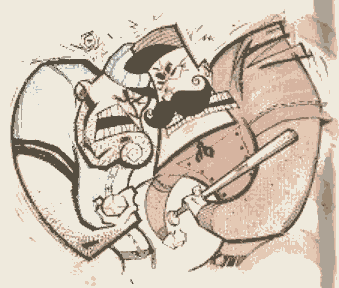
The manual of Ken Griffey Jr. Presents Major League
Baseball begins with a primer on the history of baseball. This is a very
thoughtful feature, as Nintendo games are primarily meant for young children who
might just be beginning their journey on the pathway of baseball fandom. It's
also helpful for leading us transdimensional tigers down the path of findout to
see how our concept of baseball holds up in the new universe. Accompanied by
charming illustrations of old-timey, mustachioed ballplayers, there are some
tidbits given which would be disputed by some factions of baseball
intelligentsia, notably, the assertions that the Cincinnati Red Stockings were
the first professional ballclub and that the first World Series in 1903 is the
formal beginning of "the modern era of baseball". Some readers might be
disappointed that the game's young and impressionable audience would read this
historical trivia as fact when the details are dubious at best, but I see a
certain beauty in it. Baseball's allure lives in its deep lore which can be
debated and interpreted in many different ways, despite paradoxically being the
sport in which ostensibly objective statistics are given the most attention. To
indoctrinate the youth into embracing that paradox is bring them closer to the
baseball gods than they would be if they were only given the miniscule amount of
facts wherein lies a history which is completely agreed upon.
The next chapter explains he various game moves. There
is an All-Star Game and a Home Run Derby, a World Series in which any NL and AL
team can be chosen to compete for seven games, a standard exhibition mode, and
the season mode. The season is what we will play, and this has numerous options
within itself. You can play 26 games, 78, or the full 162; I will play 78 games.
You are also given the option of playing the season under 1969 division rules,
with two divisions in each league and a postseason consisting only of League
Championship Series and the World Series, or you can play under the
three-division-per-league structure introduced in the 1994, although the
addition of the Wild Card and the subsequent Division Series to postseason could
not be tested in your reality until the 1995 postseason. We will play with 1994
rules, and I would encourage players to think of this game as a concrete
simulation of what a completed 94 season might have looked like.
We are given diagrams of the
controls, followed by descriptions of each team, along with the years in which
they were founded and any World, League, and/or Division Championships they have
won. Each description is comprehensive and covers the precise history you'd
expect their respective fanbases to prioritize, although it is comical and
understandable
how the two 1993 expansion teams ended up with
descriptions lasting a short couple sentences each.
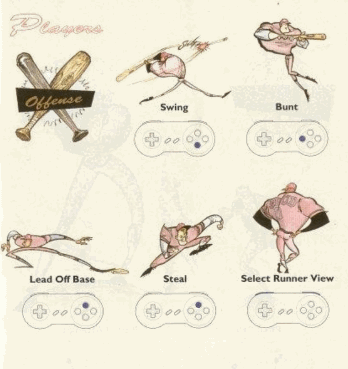
I will share the blurbs for the Seattle Mariners because
we will be playing as them, along with the four Playhouse teams.
| SSEATTLE MARINERS (1977) |
| World Championships: None |
| American League Championships: None |
| American League Division Championships: None |
| Since entering the league in 1977, the history of the
Seattle Mariners has consisted of more downs that ups. In fact, early Mariner
highlights often centered around strange giveaways like Funny Nose Glasses Night
more than great play on the field. But, in recent years, the attitude in Seattle
has changed with a greater emphasis on winning. This has been demonstrated by
the hiring of a proven manager (Lou Piniella) who is still in the prime of his
managing career and the active pursuit of top players through trades and free
agency. After 14 seasons of sub-.500 baseball, the Mariners finished over .500
in 1991 and again in 1993 and now strike fear in opponents with Randy Johnson's
power pitching, Jay Buhner's cannon arm, and Ken Griffey Jr.'s exciting
all-around play. |
One of the hallmarks of this era of baseball video games
that seems archaic to modern audiences was that publishers had to acquire the
license from MLB to use real team names and the license from the Player's
Association to use real player names separately. If a game got any license at
all, they tended to only get one or the other. RBI Baseball got the players but
used generic city names for teams, and Griffey Presents has the real teams, but
contains no real player names other than Ken Griffey Jr. All the players in
Griffey Presents have the 1993 statistics, handedness, and jersey numbers of
real player, but use fake names. Sammy Sosa's expy, to use a Playhouse-relevant
example, is called E. Crash. I address this Oakland White Elephant in the room
now because I am surprised to see both Lou Piniella and Jay Buhner namedropped
in the manual. Did Nintendo get the license for the manual but not the game, or
did expect no lawyer to bother looking in the manual of their Ken Griffey Jr.
video game?
Either way, here are the Playhouse team descriptions.
| TEXAS RANGERS (Washington Senators 1961-1972, Texas
Rangers 1972-) |
| World Championships: None |
| American League Championships: None |
| American League Division Championships: None |
| Born through expansion to pacify Washington citizens
following the original Senators' move to the Twin Cities, the new Senators never
took flight enduring 10 losing seasons before moving to Arlington, Texas in
1972. Like the Seattle Mariners in the 1980s, the Rangers struggled to shake
their expansion image in the 1970s. Throughout the 70s, the Rangers made a habit
of acquiring veterans who were past their prime. Many of these transactions
backfired leaving the Rangers with a depleted farm System and a high payroll.
Although the Rangers haven't won a division championship since moving to Texas,
many experts consider the Rangers to be the team of the 90s with players like
24-year old Juan Gonzalez, who has already won 2 home run titles and Will Clark,
an perennial all-star during his 8 seasons with the Giants. |
| CHICAGO WHITE SOX (1900-) |
| World Championships: 1906, 17 |
| American League Championships: 1900, 01, 06, 17, 19, 59 |
| American League Division Championships: 1983, 93 |
| For nearly 100 years, the White Sox have been Chicago's
southside team. Sharing the Windy City's fanbase with the Cubs, who play on the
North side of town. |
| During this time, the White Sox have fielded some great teams including the Shoeless Jackson led teams of the 1910s and the Go-Go Sox of the 1950s, which was one of only two American League teams other than the Yankees to appear in the World Series from 1949-60. Led by one of the best young pitching staffs in baseball, the White Sox won a division championship, in 1993, and experienced post season play for only the second time since 1959. |
| CHICAGO CUBS (1876-) |
| World Championships: 1907, 08 |
| National League Championships: 1976, 80, 81, 82, 85, 96,
1906, 07, 08, 10, 18, 29, 32, 35, 38, 45 |
| National League Division Championships: 1984, 89 |
| Though the Cubs haven't been to the World Series since 1945, there isn't a team in the Major Leagues with fans as devoted as the ones who flock to Wrigley Field. Prior to the 1945 World Series, the Cubs appeared in a respectable 10 World Series, however they lost 8 consecutive Series after winning in 1907-08. For even the most loyal Cub fan, the 1969 season was a difficult one to endure. Throughout the first half of the 1969 season, the Cubs sat atop the Eastern Division and, by mid-August, their lead had ground to 8 and a half games. As the summer came to a close, the Cubs began to fight two foes: pressure inflicted on themselves and the Miracle Mets, a lowly expansion team that finished 9th or 10th in each of their previous 7 seasons. The Mets made an incredible charge overtaking the Cubs, eventually winning the division by 8 games. The significance of this event is that the Cub fans stuck by their team following the flop. Today, 25 years later, fans in Chicago can buy "Forgiven But Not Forgotten" shirts referring to the summer of '69. |
| BALTIMORE ORIOLES (St. Louis Browns, 1901-53, Baltimore
Orioles 1954-) |
| World Championships: 1966, 70, 83 |
| American League Championships: 1944, 66, 69, 70, 71, 79,
83 |
| American League Division Championships: 1969, 70, 71,
73, 74, 79, 83 |
| It's a little known fact that the Baltimore Orioles were
once the Milwaukee Brewers — the original Brewer, that is. A charter member of
the American League in 1901, the team moved from Milwaukee to St. Louis and
changed its name to the Browns prior to the 1902 season. The purpose of the move
was to give the new American League a team in St. Louis, the fourth largest city
in the nation at that time. The Browns never enjoyed the popularity of their
cross-town rivals, the Cardinals. Of course, bad play didn't help. From
1901-1953, the Browns winning percentage was an anemic .433 with only one World
Series appearance, which the Browns lost to the Cardinals. As bad as the Browns
were, the Orioles of Baltimore have been absolutely stellar by comparison. Since
1969, the Orioles have the best winning percentage in baseball including the
incredible 1969-71 O's that averaged 106 wins per season during that 3-year
span. |
As stated before, many baseball games of this era had to
make up player names, but many games also made up all the players besides
whomever had their name in the title. Griffey Presents has what you could
describe as real players with fake names. The game gives you the option to edit
names, which many players utilize to give players their real names, but I will
preserve the integrity of every character as a Ken Griffey Jr. character, as the
Ken Griffey Jr. series is a canon of its own as opposed to a mere baseball
simulator. I will acknowledge who many players really are, and I will often use
their names in summaries interchangeably with their fake names, out of habit.
Many of the fake names are amusing on their own, as most teams have a theme
which all fake names correspond to. My hometown Detroit Tigers are mostly named
after Motown musicians, while the Seattle Mariners are named after Nintendo
employees. The references are explicit rather than implied. When Royals players
are named after US Presidents, they don't use W.J. Klinton; they use B. Clinton.
It's wonderful.
Here is our
Seattle Mariners Roster
| Starting Position Players |
| C - P. Sandhop (Dave Valle) |
| 1B - D. James (Tino Martinez) |
| 2B - H. Lincoln (Bret Boone) |
| 3B - G. Sinfield (Mike Blowers) |
| SS - D. Owsen (Omar Vizquel) |
| LF - T. Harman (Mike Felder) |
| CF - Ken Griffey Jr. (Himself) |
| RF - J. Hutt (Jay Buhner) |
| DH - D. Brooks (Edgar Martinez) |
| Bench |
| C - L. Barr (Bill Haselman) |
| C/OF - M. Kelbaugh (Mackey Sasser) |
| CI - R. Donker (Dave Magadan) |
| 2B - J. Cordell (Rich Amaral) |
| 2B/OF - J. Story (Greg Litton) |
| OF - S. OConnor (Brian Turang) |
| Starting Pitchers |
| 1 - J. Tingdale (Randy Johnson) |
| 2 - K. Tofte (Erik Hanson) |
| 3 - R. McManus (Tim Leary) |
| 4 - C. Budd (Dave Fleming) |
| 5 - E. Krush (Chris Bosio) |
| Bullpen |
| CL - W. Shirk (Norm Charlton) |
| RP - P. Sather (Jeff Nelson) |
| RP - G. Tilden (Dwayne Henry) |
| RP - L. Swan (Ted Power) |
| RP - S. Pelland (Russ Swan) |
